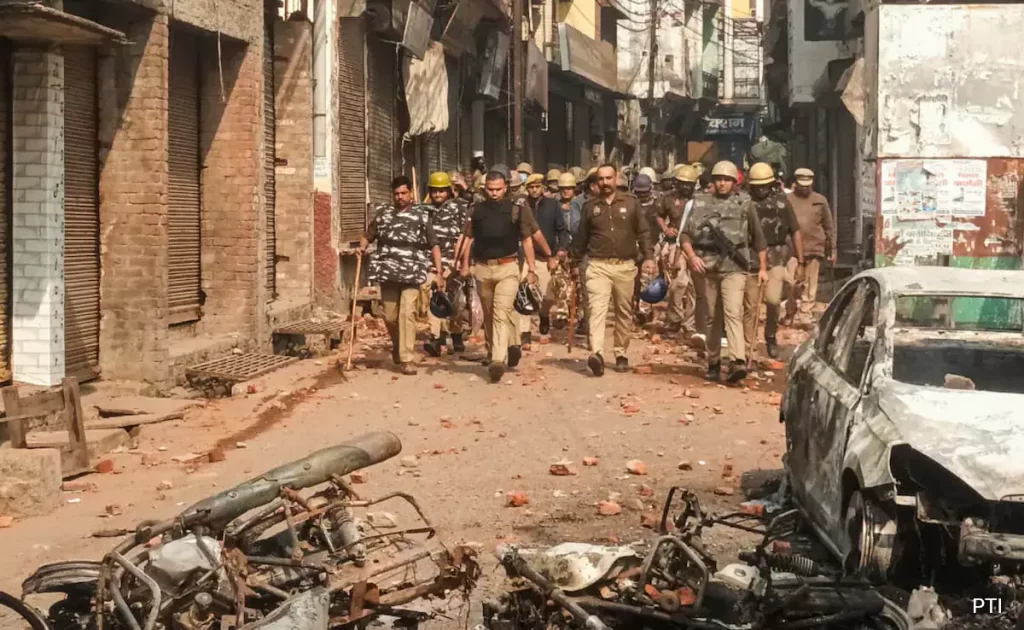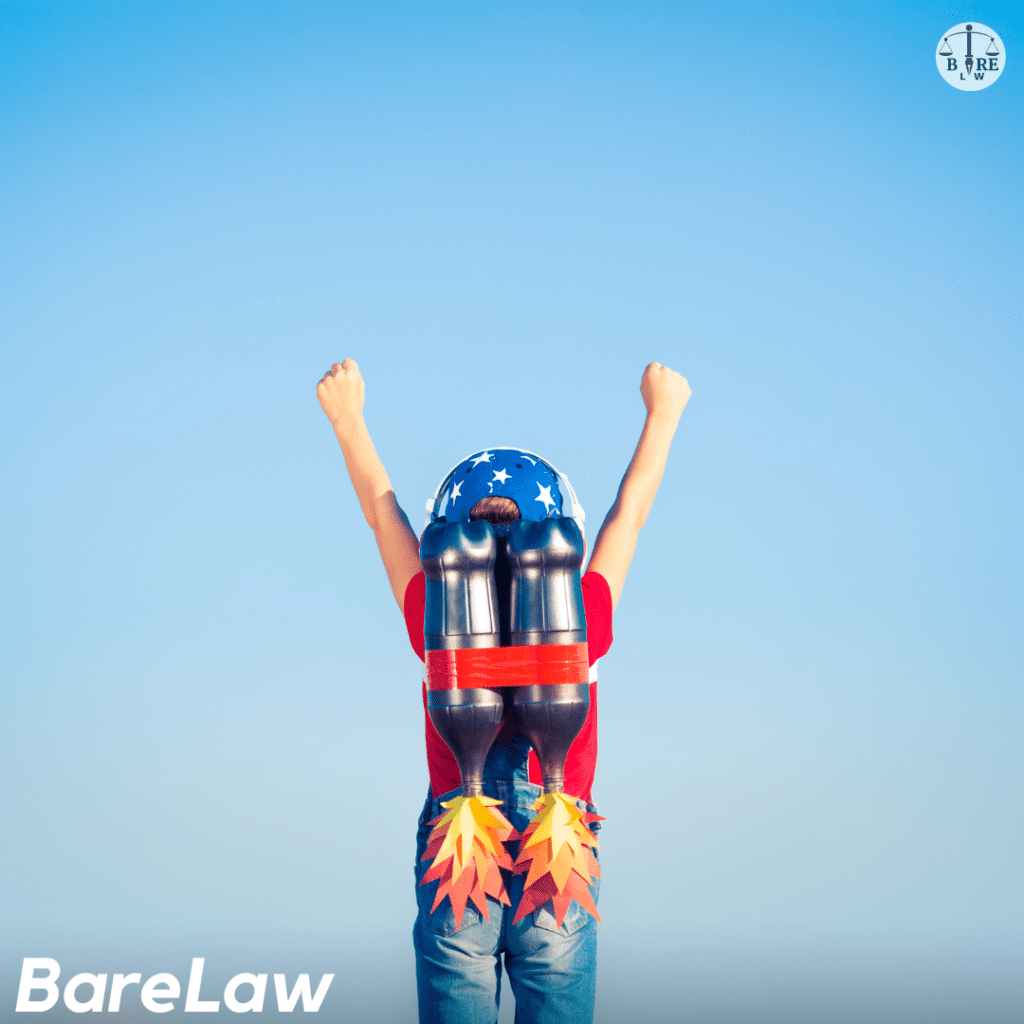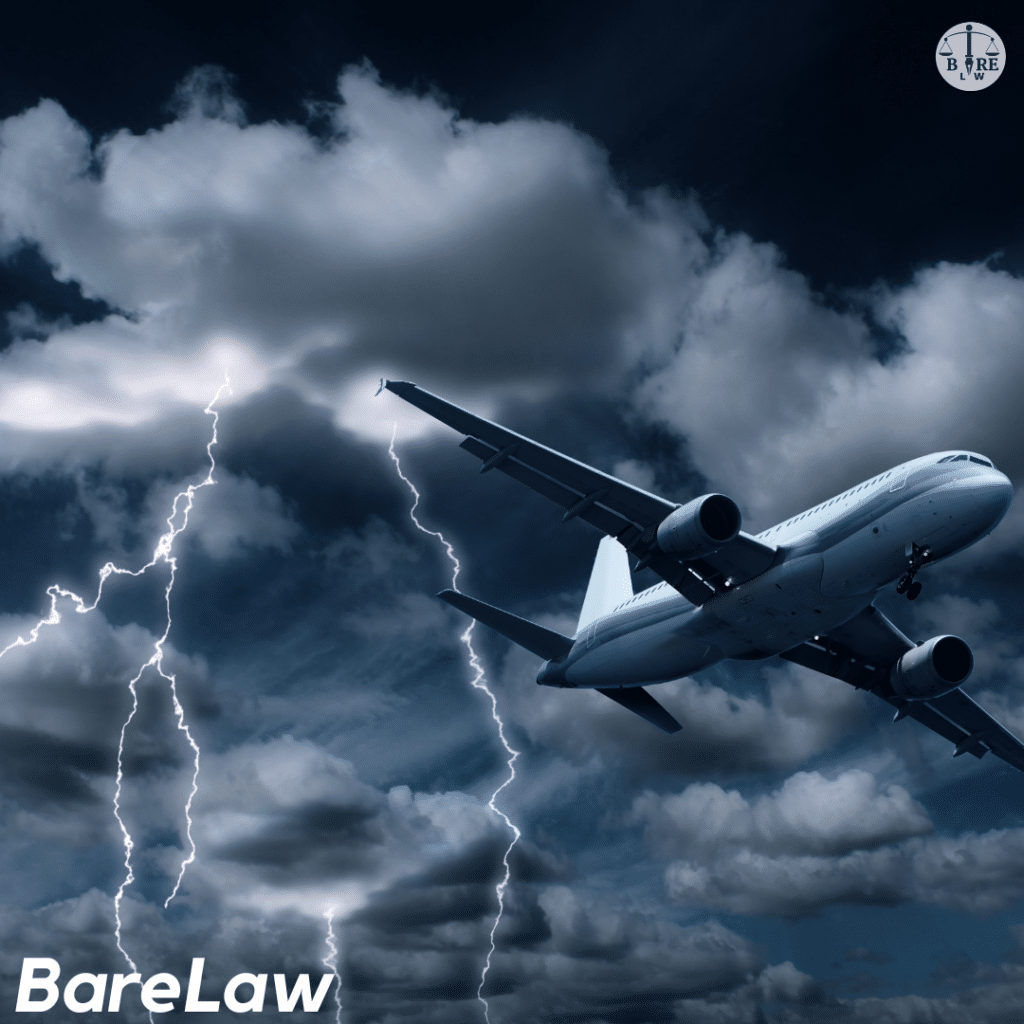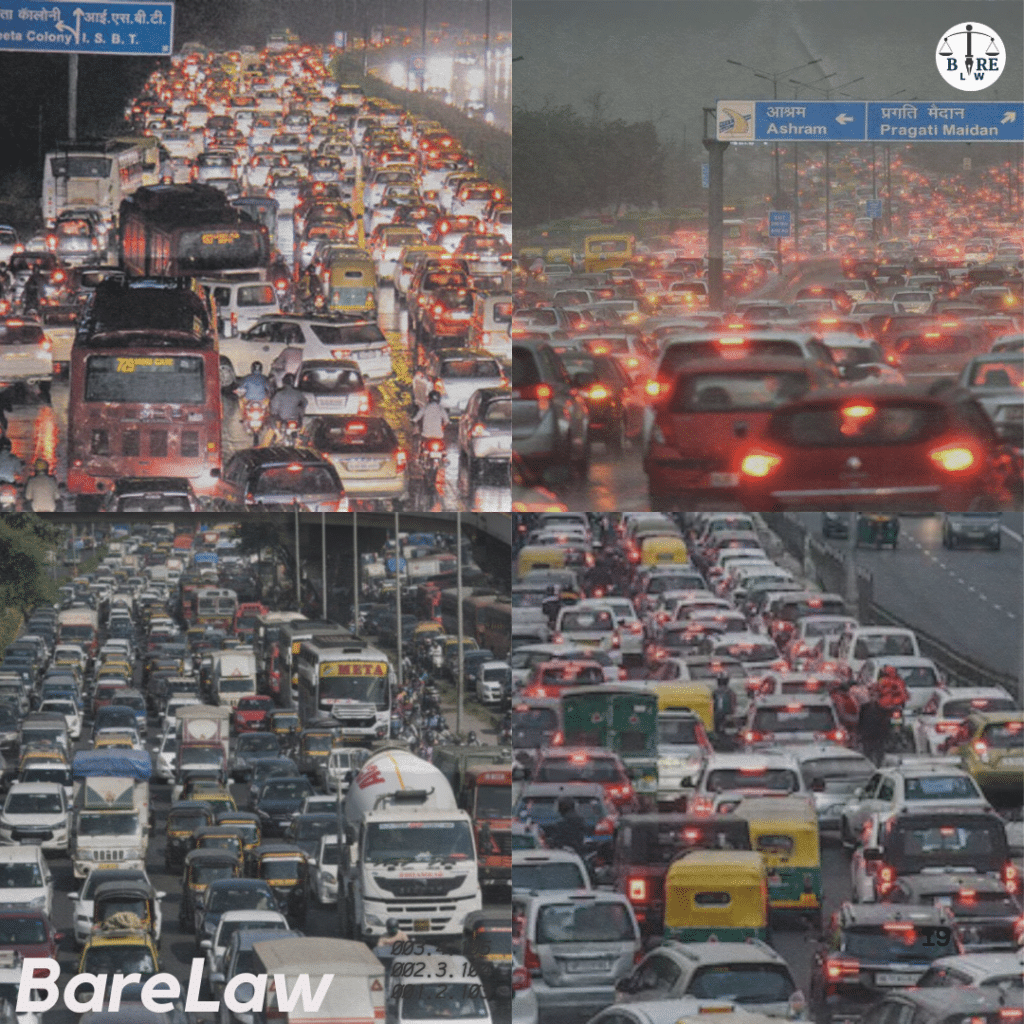
The court-ordered survey of the Shahi Jama Masjid in Sambhal, Uttar Pradesh, sparked violent clashes, resulting in four deaths and highlighting deep-rooted historical, legal, and communal tensions. The incident raises critical questions about the Places of Worship Act, 1991, and the challenges of balancing historical grievances with societal harmony.
Table of Contents
Don’t Visit This Place If You’re A Police Officer: Sambhal Unrest
When the so-called survey of the Shahi Jama Masjid in Sambhal, Uttar Pradesh, took a violent turn, the debate over history, law, and communal harmony has once again been brought to the fore—this time even more prominently with the event’s proximity to Durga Puja. In this article, I begin by examining the historical context for the dispute; then, I discuss legal and social implications today; and finally, I explore implications for the future.

Historical Context: The Shahi Jama Masjid
Sambhal is also known as the Shahi Jama Masjid of the Mughal era. The mosque, it’s alleged, was built in 1529 by Emperor Babur on the site of a Hindu temple dedicated to Lord Harihar. Tied to a set of historical grievances during the Mughal period, when temples were claimed to have been destroyed to build mosques, this claim also suggested that Muslims built all those mosques from some other land after demolishing temples.
This narrative has caused years of rifts and legal tussles like the divisive Ayodhya dispute. The Hindu side’s advocates say that it’s important’s uncover the mosque’s history’s claim to their cultural heritage. However, these claims are deeply contested and trigger intense emotional responses among Hindu and Muslim communities.
The Current Situation: Legal Orders and Unrest
A petition filed in a local court demanded a survey of the Shahi Jama Masjid. On November 24, 2024, the local court ordered a survey of the Shahi Jama Masjid, claiming that the mosque stood on the site of the Harihar temple. The survey was videographed and photographed as directed by the court and conducted in the presence of tight security. However, it came with violent clashes between local residents and police forces.

Key Developments:
- Violence and Casualties: Four died, two of which had been killed by bullets fired by country-made pistols, officials said. Several vehicles were also set ablaze while around 20 police personnel were injured.
- Law Enforcement Response: To prevent the situation from further escalating, the region went into shutdown, including Section 144 (unlawful assembly prohibited); the internet services in the area were suspended for 24 hours, the school holidays were declared, and the area was on total shutdown.
- Detentions and Legal Action: Two women are among twenty-one who have been detained. Officials said those involved in the violence will also be booked under the stringent National Security Act (NSA).
Legal Framework: The Places of Worship Act, 1991
At the heart of this issue is the Places of Worship (Special Provisions) Act of 1991, which aims to preserve the religious character of places of worship as they stood on August 15, 1947. This Act:
- Prohibits Conversion: Section 3 explicitly bans the conversion of any place of worship into one of a different religion.
- Exception for Ayodhya: The Act excludes the Ram Janmabhoomi-Babri Masjid dispute from its purview, allowing its adjudication as a special case.
While the Act seeks to prevent communal conflicts by maintaining the status quo of religious sites, critics argue that it limits the exploration of historical claims. Supporters of the Act emphasize emphasizein maintaining communal harmony and preventing politically motivated disruptions.
Political and Social Reactions
The incident has triggered a wide range of political and social responses:
- Opposition Criticism: The Samajwadi Party chief, Akhilesh Yadav, urged the Supreme Court to intervene, saying there was a conspiracy to create communal tension. Similarly, Congress leaders have slammed the state government for how it dealt with the situation.
- Government and BJP Defense: The ruling BJP called for respect of judicial orders, saying those disagreeing should seek legal remedy.
- Community Reactions: Public opinion has polarized polarizedcident, with some saying it is a necessary step to unearthing historical truths. In contrast, others see it as an affront to religious sentiments and the country’s harmony.
Future Implications
Legal and Judicial Landscape
The survey report, due to be submitted on November 29, 2024, will influence the legal proceedings. If the finding backs up the claims of an earlier temple, it could ignite drawn-out litigation and shape potential contests across the nation. However, the Places of Worship Act’s applicability is also questioned in terms of responding to historical grievances.
Social Harmony
That is a very revealing incident because it highlights the frayed communal balance in India. Such events frequently represent flashpoints for generalized unrest, making the handling of disputes over religious issues unpalatable. We should be talking about ways to bring people together, to understand and to reconcile, not to widen the divisive gaps.
Policy and Governance
The Sambhal incident reminds governments to avoid potential sources of conflict. Good dialogue among communities and transparent legal processes would have prevented similar escalations in the future.
Conclusion: Navigating Complexities
The violence in Sambhal is the manifestation of centuries old grievances, legal mandates and communal sentiments. The judiciary has an important role in adjudicating these disputes, but so too have political leaders and s, civil organisations prioritising harmony.
India, too, is struggling to learn from its layered and diverse history, where its growth will require approaching it with no holds barred. Events in Sambhal are a stark reminder that whether or not we live in a plural, multicult, natural and multireligious India can be discussed only if there is respect for the rule of law.
FAQs
- What led to the violence in Sambhal?
The violence erupted during a court-mandated survey of the Shahi Jama Masjid, which is claimed to have been built over a demolished Hindu temple. - What is the legal basis for the dispute?
The Places of Worship Act, 1991, prohibits changing the religious character of sites as they existed on August 15, 1947, but the claim predates this period. - What actions were taken by authorities?
Internet services were suspended, schools were closed, and Section 144 was imposed. Twenty-one individuals were detained, and those involved in the violence face charges under the NSA. - What are the potential outcomes of the survey?
The survey findings could influence legal proceedings and set a precedent for similar disputes, potentially impacting communal harmony. - What is the significance of the Places of Worship Act, 1991?
The Act seeks to maintain the religious status quo of places of worship as of 1947 to avoid communal conflicts, barring the Ayodhya dispute as an exception.
A Dirty Condom Can Save Your Hotel Expense
A 21-year-old in China scammed over 300 hotels by fabricating hygiene complaints, exposing vulnerabilities in the hospitality industry and underscoring…
How Your 3 Year Old Can Start A Startup
Balancing parenthood and entrepreneurship is a complex journey, as highlighted by the co-founders of YourDOST, Puneet Manuja and Richa Singh,…
How Do Airplanes Land In A Cyclone
Cyclone Fengal made landfall in northern Tamil Nadu and Puducherry, causing heavy rainfall, aviation disruptions, and localized damage, underscoring the…
In Delhi “25.5 Kms in 1.5 Hours” Amid Protests In Noida
The ‘Delhi Chalo’ protest by farmers, demanding fair compensation and policy reforms, caused massive traffic disruptions in Delhi, highlighting the…







